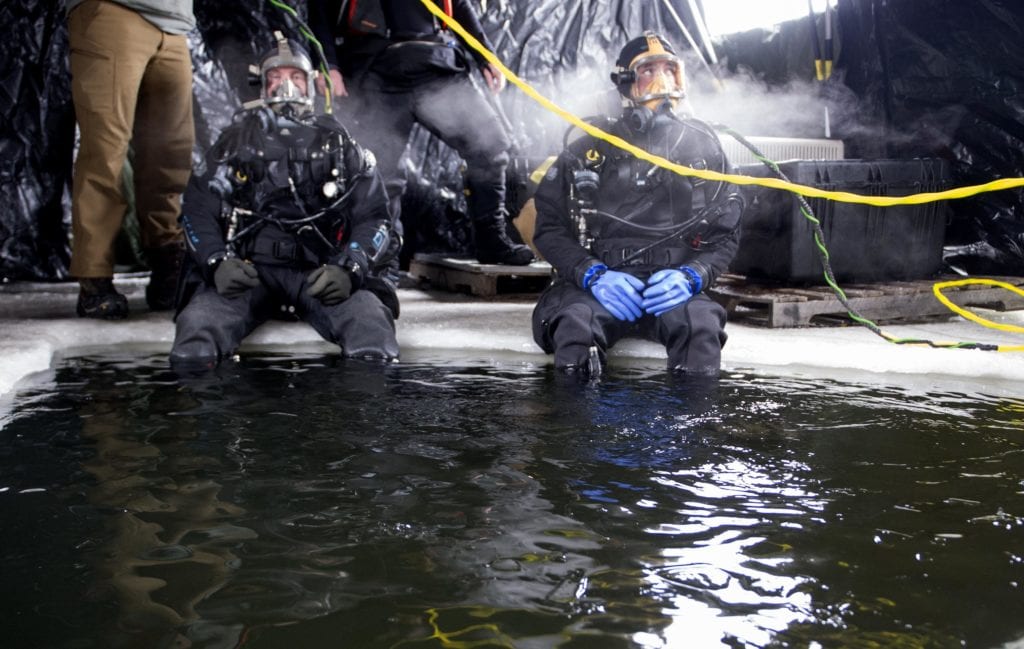
VIRGINIA BEACH, Va. – Mobile Diving and Salvage Unit (MDSU) 2, headquartered at Joint Expeditionary Base Little Creek-Fort Story, hosted the third iteration of ice dive training for Navy divers and explosive ordnance disposal (EOD) technicians at Camp Ripley in Little Falls, Minnesota, in February, the group said in a Feb. 16 release.
The course, run by qualified Navy divers and civilian instructors, teaches the fundamentals of operating on and diving under the ice.
Ice diving is unique and it can be hazardous without the proper training. Dry suit familiarization dives must be completed prior to diving under the ice, and scuba cold-water set-up training and familiarization must also take place prior to the operation.
Familiarization and training on all aspects must be conducted prior to operating in an Arctic environment, which is why civilian instructors are used who have a wealth of experience operating in these cold environments. The courses hosted by Dive Rescue International are introductory and provides the tools necessary for Navy divers to execute ice diving operations in an Arctic environment. The extensive logistical considerations, medical considerations, emergency evacuation procedures, and topside personnel considerations are also taken into account prior to execution.
Camp Ripley is an outstanding site to conduct ice and cold weather dive training. The site allows Navy divers to train in a subzero temperature and arduous conditions at training ranges that provide bodies of water similar to operating in the Arctic environment. The Army National Guard has been a tremendous help in supporting with base facilities and logistical support making it an ideal location to train in the Arctic environment now and in the future.
In the course, the divers are responsible for dive setup, which includes building tents, heating the tents and cutting holes in the ice before diving.
While the Arctic environment is not outside of the skill set of Navy divers, it is a significant difference from the comparatively warmer waters of Virginia Beach and the significantly warmer waters of Key West, Florida, where many divers are accustomed to training.
With the recent release of the Department of the Navy’s strategic blueprint for the Arctic, this annual training event has become even more relevant, showcasing how Navy divers are assisting in building a more capable arctic naval force.
MDSU 2 is part of Explosive Ordnance Disposal Group (EODGRU) 2, which oversees all East Coast explosive ordnance disposal and a mobile diving and salvage unit which are capable of providing skilled, capable, and combat-ready deployable forces around the globe to support a range of operations.
Article by Chief Petty Officer Jeff Atherton, Explosive Ordnance Disposal Group Two
- U.S. Coast Guard Cutter Anacapa decommissioned after 34 years of service - April 29, 2024
- Commander Marforpac Visits Palau - April 29, 2024
- April 28 Red Sea Update - April 29, 2024






